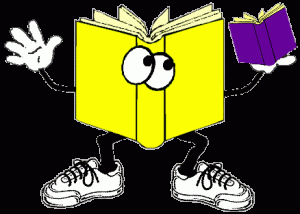 You may be asked to write a review of a
You may be asked to write a review of a
ONE: storytelling
- book you have read
- film you have seen
- tv show
TWO: music
- CD or iTunes album you have listened to
- concert you’ve attended
- theatre performance (play, ballet, stand-up comedy) you’ve attended
THREE: games
- video game you have played
- app you’ve downloaded
- board game
FOUR: devices
- mobile phone
- mp3 player
- games console
- e-book reader
FIVE: places
- restaurant / cafe
- hotel
- travel company
- shop / chain of shops / online shop
So what do you do?
- Introduce – begin with a dramatic statement. Never begin a review by telling the reader that you are writing a review. They already know that and will think you are very stupid for stating the obvious (“I am writing a review of…” blah blah blah yawn). Instead try this: “The eagerly anticipated sequel to the best-selling [name of book/CD/film/video game] is finally here and let me tell you it does not disappoint“. Or this: “Let me offer you fair warning dear readers – [name of book/CD/film/video game] offers a dark, intense, disturbing glimpse of the human condition“. Or this: “Critics will love [name of book/CD/film/video game] but the public won’t be impressed. Let me tell you why…“
- Details – but no plot spoilers! don’t tell the entire story or give away every detail of the book/CD/game/performance. If the thing you’re reviewing is any good, you want to make the reader curious enough to buy the book/CD/game or go to the performance to see it for themselves. They won’t still be curious if you tell them everything. The amount of time given to plot/individual songs etc.. varies widely from review to review. You might mention basic plot outline, recurring themes, use of symbolism, feelings evoked in the audience/reader/listener/gamer.
- Evaluation – what works, what doesn’t and why! Remember you must give concrete reasons WHY you liked or disliked the book/ CD/ game/ performance. Avoid generalisations like “the story/music/game was very moving“. Instead be more specific “the scene/song where Amos loses the only friend he has left in the world is enough to move even the hardest teenage heart to tears. Thank God the room’s in darkness, eh?“.
- Recommendation – who should buy/see this book / CD / game / concert /performance and why? Keep this bit of your review short and sweet. Is this thing worth buying/seeing? (Sum up why). For everyone or just a select target audience?
FILM REVIEW – checklist
Name of film, release date, age rating, director, cast (actors & actresses), screenwriters, running time, plot, characters, dialogue, cinematography, sets/locations, special effects & CGI, genre, soundtrack, favourite scenes, ending (satisfying/shocking/sad? – but don’t give the ending away), background info (other films in this franchise/ by this director/ this film remind you of).
Phrases for film reviews =
Characters: well-developed, believable, likeable, flawed, endearing, unconvincing, one dimensional, protagonist, antagonist, villain, hero, heroine, gangster, psycho, love-interest etc…
Genre: Fairy-tale romance, action-packed thriller, edge-of-your-seat terror/horror, gross-out comedy, period drama, kids animation with an adult sense of humour, sci-fi adventure, summer blockbuster, monster movie etc…
Plot: laugh out loud funny, full of in your face violence, suspense, familiar scenes of family life, car chases, gags, engrossing, gripping, emotionally engaging, soppy and melodramatic, pretentious, moves quickly to a breathtaking conclusion, loses its way at times, crams too much into the final half hour, grips from the first second, is convoluted and difficult to follow, is predictable and lacklustre, is slow moving but intense, offers a fantastic psychological roller-coaster of emotions, climax is satisfying/ unexpected/ predictable/ disappointing/ uplifting/ depressing/ shocking/ memorable/ creepy/ terrifying/ charming.
If like me you love movies, check out Mark Kermode’s film reviews on his podcast or go to http://www.empireonline.com/
MUSIC REVIEW – checklist
Number of tracks, sequence of tracks, genre (hip-hop, dance, reggae, jazz etc), pace/speed of songs, other albums by this band, lyrics, themes, emotions, vocals, harmonies, instruments – guitar solos, drumming, orchestral accompaniment, quotes from lead singer, background to the albums release, comparison to other similar bands/singers.
To read music and concert reviews & get a sense of what is expected look at: http://www.hotpress.com
http://www.nme.com
http://www.qthemusic.com
VIDEO GAME REVIEW -checklist???
I confess to having zero interest in gaming so I might have to get one of my mates to come up with a checklist for what goes into a game review. In the meantime check out Ben Croshaw’s zeropunctuation for some hilariously entertaining reviews.
BOOK REVIEWS – checklist
Author biography, previous books published, genre, plot, characterisation, style of writing, quotes from author interview, nominations for awards, target audience, favourite scenes, ending (satisfying/shocking/sad? – but don’t give the ending away).
Check out the book reviews in The Guardian.
PERFORMANCE REVIEWS – checklist
Acting, blocking (movement on stage), body language/gestures, facial expressions, tone of voice, costume, props, set design & setting, sound effects, music, lighting, plot, themes, emotions, favourite scenes, ending (satisfying/ shocking/ sad? – but don’t give the ending away), quotes from director and actors/actresses.
Check out theatre reviews in the Irish Theatre magazine or in The Guardian.






